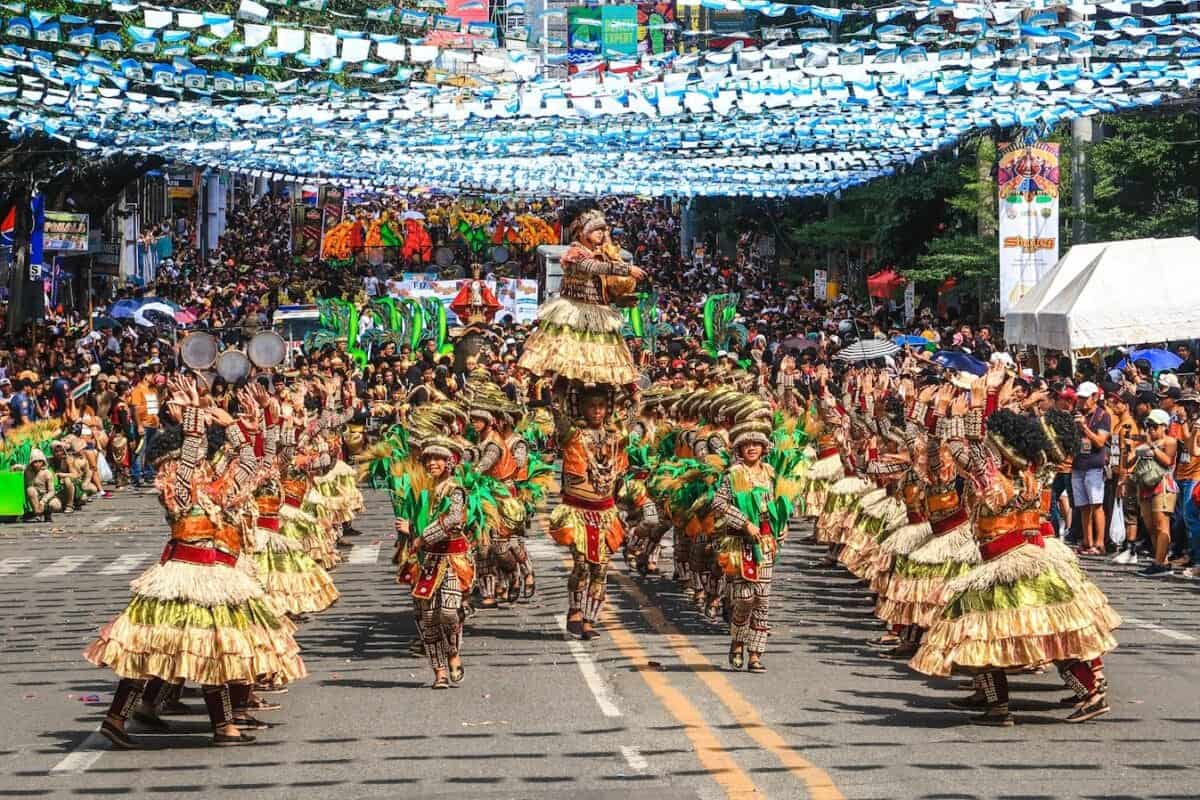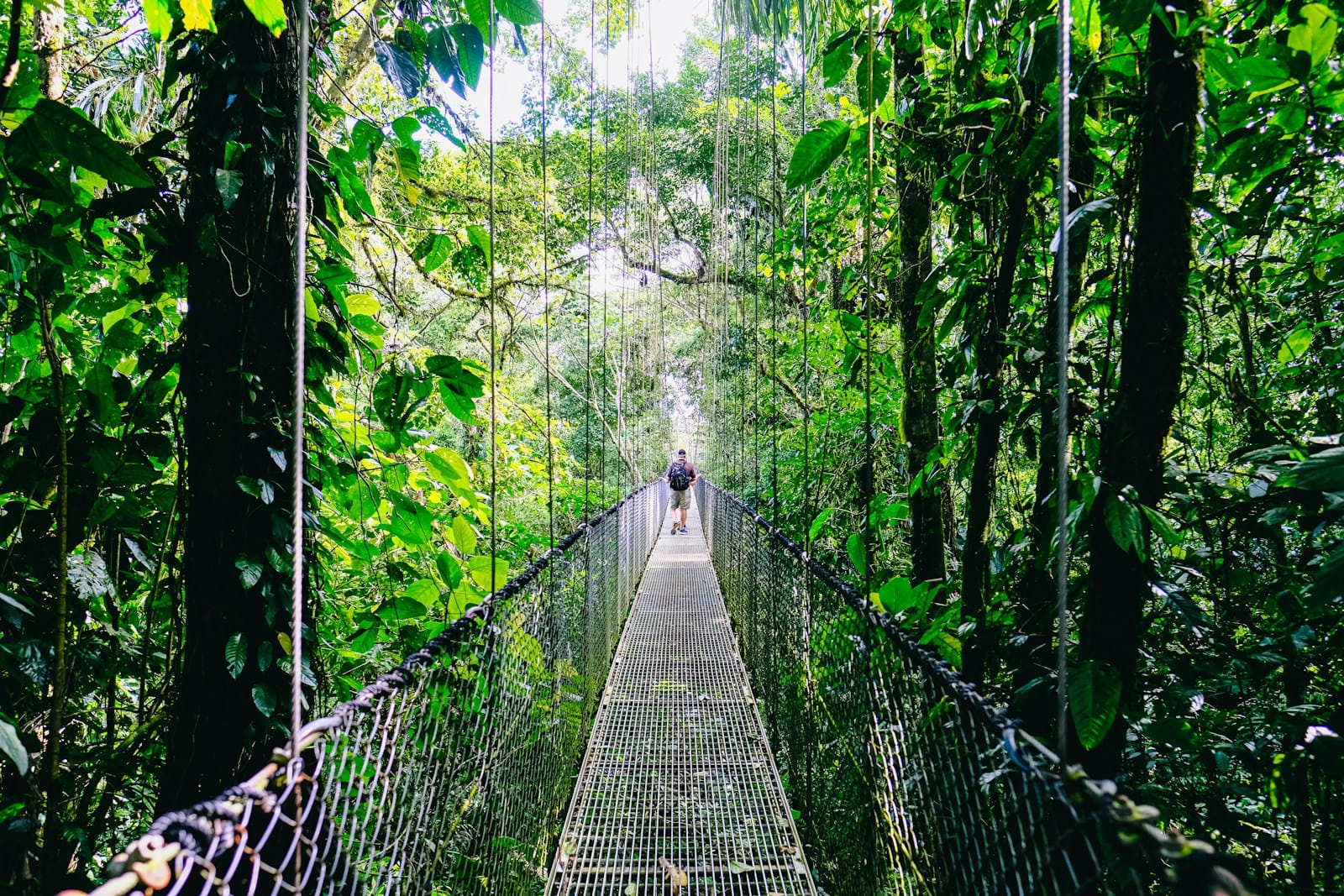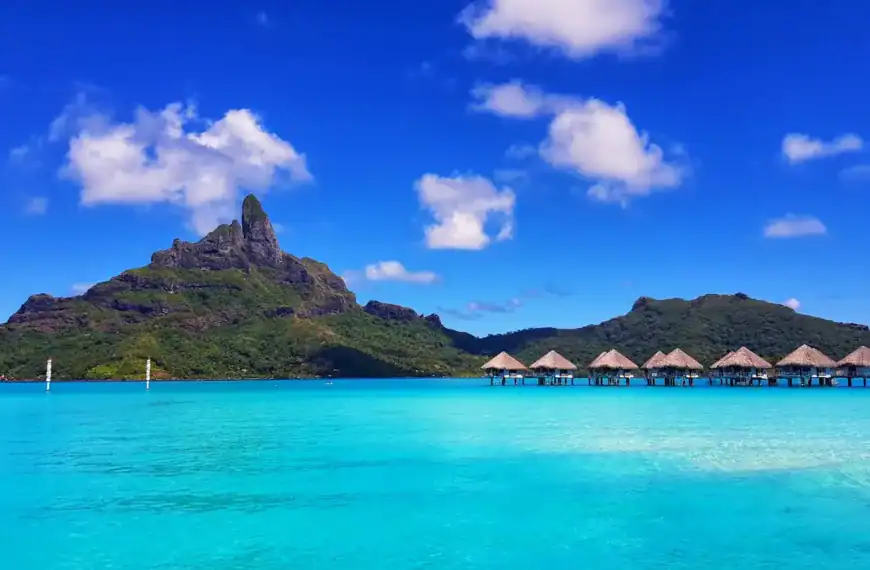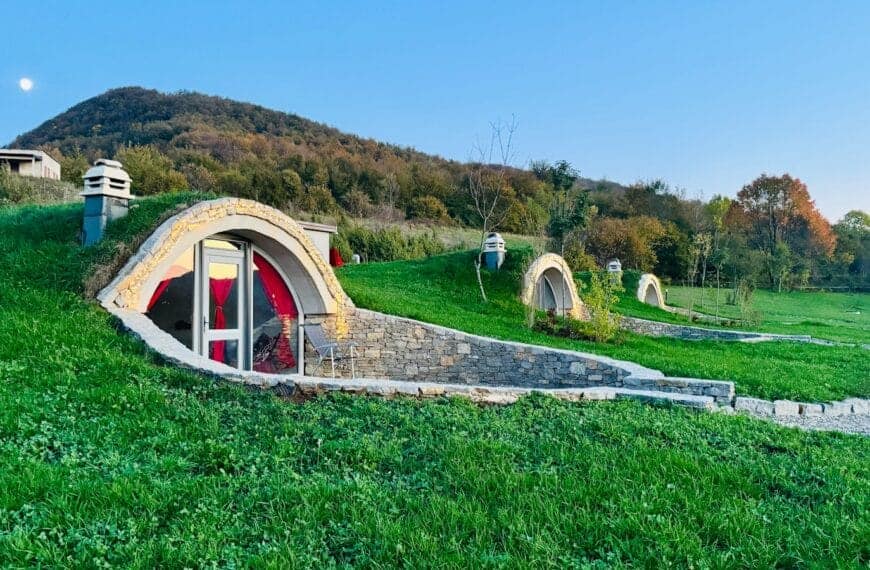Philippines Culture of Heritage, Food and Festivals
Intro to Philippines Culture
Step into a Filipino neighborhood at dusk and you’ll feel it: the closeness of community, the warmth of shared meals, the echo of prayers mixing with karaoke from next door. Philippines culture is not a performance for tourists — it is an expression of kinship, gratitude, and spiritual endurance.
Rooted in indigenous beliefs, shaped by colonization, and fiercely held by families across the archipelago, Filipino identity runs deeper than surface impressions. This is a land of layered customs, sacred hospitality, and vibrant, living tradition.
This guide uncovers the traditions, values, and customs that make the Philippines so unique — and how to experience them mindfully as a traveler.
What Makes Philippines Culture Unique?
Philippines culture blends Austronesian, Malay, Chinese, Islamic, Spanish, and American influences. Yet its soul is distinctly Filipino — defined by communal values, spirituality, and resilience.
Here, respect is expressed through silence and humility. Children say “po” and “opo” to elders. Strangers are greeted warmly. Deference and non-confrontation are the norm, governed by unspoken codes like hiya (shame/modesty) and pakikisama (getting along).
Filipinos value social harmony over individual opinion. Personal success is always linked to family. These values often contrast with Western norms — where directness is prized, independence championed. In the Philippines, belonging comes before self.
Discover the heart of Filipino heritage through guided Philippines tours — from tribal music encounters and rice terrace rituals to local feasts, riverside villages, and cultural celebrations you’ll never forget.
Deep Roots – History & Foundations of Philippines Culture
Before the Spanish arrived in 1521, the Philippines was a web of independent barangays (village-kingdoms), ruled by datus and linked by trade across Southeast Asia. Animism, ancestor worship, and sacred nature rituals formed the spiritual fabric of early communities.
Islam spread in Mindanao in the 14th century, influencing the southern sultanates. But it was the 333-year Spanish colonization that most deeply reshaped Filipino society: introducing Catholicism, patronage systems, fiestas, and a colonial caste system.
American rule (1898–1946) introduced English, public education, democracy, and consumerism. Japanese occupation left trauma and resistance. Post-independence, Filipinos forged a national identity that balances ancient roots with colonial legacies — and does so with grace.
Today, many still live by oral traditions, faith rituals, and family lineages tied to ancestral lands, even in the face of modernity.
Traditions, Beliefs & Daily Life in the Philippines
In the Philippines, daily life is family-centered and spiritually anchored. The average home includes extended relatives, and decisions are made collectively. Elders hold authority, and children are expected to show obedience and gratitude.
Morning routines often include prayer, whether Catholic rosaries or quiet invocations to ancestral spirits in mountain villages. Meals are shared. Neighbors greet one another as “kuya” (older brother) or “ate” (older sister) even without blood ties.
Important beliefs include:
- “Utang na loob” – a debt of gratitude that binds relationships
- “Bayanihan” – collective helping, from building homes to hosting festivals
- “Pagmamano” – the respectful gesture of pressing an elder’s hand to the forehead
Whether in rural farms or urban condos, these values are visible. Even modern Filipino families abroad often continue these customs through rituals, food, and language.
Celebrations, Festivals & Ceremonies
Festivals in the Philippines reflect both deep spirituality and communal joy. They’re loud, colorful, reverent — and completely integral to Filipino life.
Here are just a few that capture the country’s diversity:
- Sinulog Festival (Cebu – January): Dancers in tribal costumes honor the Santo Niño with street parades, drumbeats, and mass celebrations.
- Ati-Atihan (Aklan – January): Participants paint their faces black to honor indigenous heritage and the child Jesus.
- Panagbenga (Baguio – February): A flower-filled celebration of spring and healing, born after the 1990 earthquake.
- Pahiyas (Lucban – May): Homes are decorated with rice, fruit, and vegetables as thanksgiving for harvests.
- Kadayawan (Davao – August): Showcases Mindanao’s 11 indigenous tribes through music, crafts, and tribal sports.
- Moriones (Marinduque – Holy Week): Reenactments of Roman centurions, faith processions, and silent devotion.
- MassKara (Bacolod – October): A response to crisis, this smiling-mask parade reflects joy amidst adversity.
Many follow the Catholic liturgical calendar, others echo harvest cycles or Islamic observances — and all offer travelers a window into Filipino values of faith, resilience, and hospitality.
Art, Architecture & Cultural Icons
Filipino art is adaptive — shaped by necessity, spirituality, and resistance.
Pre-colonial artistry includes:
- T’nalak weaving by the T’boli people — dream-inspired, sacred, and passed from mother to daughter
- Kulintang music — an ancient gong ensemble used in Mindanao rituals
- Okir carving — flowing patterns found in Maranao and Tausug architecture
Spanish-era churches, like Paoay Church (a UNESCO site), blend baroque form with indigenous construction. Bahay na bato (stone houses) show colonial wealth, while nipa huts reflect native resilience.
Modern icons include:
- José Rizal – national hero, writer, and martyr
- Jeepneys – WWII relics turned art-covered public transport
- Lea Salonga, Carlos Celdran, Apo Whang-Od – voices of music, culture, and tattoo tradition
Through these forms, Philippines culture expresses both survival and celebration.
Language, Identity & Communication
With over 170 languages, the Philippines is among the most linguistically diverse nations in Asia.
Filipino (based on Tagalog) and English are official languages. In Cebu, Ilocano, or Davao, local languages dominate. Yet code-switching between English and Filipino — called “Taglish” — is part of everyday speech.
Key cultural etiquette includes:
- Using “po” and “opo” to show respect
- Mano po greeting for elders
- Avoiding direct confrontation — yes may mean maybe, and silence often means no
Gestures differ too: raising eyebrows means hello; pointing with lips is common. Loudness, especially from visitors, may be seen as rude. Instead, humility and deference earn respect.
Cultural Etiquette for Visitors
Dress and Public Behavior
- Dress modestly in rural or religious settings
- Public displays of affection are rare
- Always greet elders respectfully
Sacred Space Etiquette
- Remove shoes in homes and mosques
- Don’t touch altars or statues unless invited
- Observe quietly during religious events
Responsible Participation in Festivals
- Ask before taking photos of rituals or dancers
- Don’t interrupt prayer or ceremony spaces
- Join if invited, but never as spectacle
How to Support Local Culture Respectfully
- Buy crafts from community cooperatives
- Learn greetings in local dialects
- Avoid “poverty tourism” or staged experiences
Misconceptions & Cultural Sensitivities
Many assume the Philippines is simply “Asian with a Spanish accent” — but this ignores the depth of its indigenous soul.
Not all Filipinos are Catholic. Millions in Mindanao are Muslim. Many Indigenous Peoples (IPs) maintain animist or syncretic beliefs.
“Filipino time” isn’t laziness — it’s fluid time, shaped by tropical life and social flexibility. Western directness can feel confrontational; here, indirect speech shows care.
Avoid casual jokes about poverty, colonization, or political instability. These are lived histories, not travel anecdotes.
Cultural Landscapes & Sacred Geography
Nature is sacred in Filipino cosmology.
- Mount Apo is revered by the Bagobo and Manobo as the “grandfather of all mountains”
- Lake Sebu is both livelihood and legend among the T’boli people
- Banaue Rice Terraces — “the stairway to the sky” — are ancestral testaments to human and land in harmony
Rivers, forests, and even balete trees are believed to house spirits (engkanto). Travelers should walk with reverence — never litter, shout, or act disruptively near these spaces.
Hospitality & Community Values
Hospitality in the Philippines is not optional — it is sacred.
Visitors, even strangers, are fed the best food, offered seats closest to fans, and told “Don’t be shy!” even when resources are limited.
In provinces, hosting involves ritual: serving merienda (snack), preparing the cleanest room, and calling on neighbors to join. Refusing food can seem impolite.
This extends beyond homes — lost tourists are often personally escorted. Locals value pakikisama, and to help is to belong.
Spiritual Rhythms in Daily Life
Many Filipinos pray before meals, start mornings with devotions, and observe weekly novenas or Sunday Mass.
In the Cordilleras, ancestor altars (called pinikpikan in some areas) are kept in kitchens. In Mindanao, Muslims attend Friday prayers and observe Ramadan with fasting and nightly feasts.
Even businesses may close early for fiestas, deaths, or patron saint processions. Religion is not compartmentalized — it flows into education, media, politics, and the home.
Cultural Resilience & Preservation Efforts
In a globalizing world, Filipino youth and elders are working to preserve traditions.
- The National Commission on Indigenous Peoples (NCIP) supports ancestral domain claims
- Local NGOs offer grants to traditional weavers and musicians
- School programs in Mindoro and Bontoc revive endangered languages
Travelers can help by:
- Supporting UNESCO-listed heritage sites like Vigan and Tubbataha Reef
- Visiting cultural schools or living museums (e.g., Nayong Pilipino)
- Buying directly from T’boli, Ifugao, or Kalinga artists
How to Respectfully Experience This Culture
Dress and Public Behavior
Be modest and courteous, especially in rural areas.
Sacred Space Etiquette
Enter temples, churches, or ancestral homes with reverence.
Responsible Participation in Festivals
Engage with humility — observe first, then join when welcomed.
How to Support Local Culture Respectfully
Use ethical operators, tip guides fairly, and learn local phrases.
Experiencing Philippines Culture Firsthand
Want immersive experiences? Try these:
- Weaving workshops in Lake Sebu with T’boli women
- Homestays in the Cordilleras with rice terrace farmers
- Kulintang music lessons in Marawi
- Cooking classes in Pampanga, the “culinary capital”
- Storytelling circles with elders in Mindoro or Palawan
Always choose community-led or heritage-certified experiences to ensure authenticity and impact.
Experience the richness of the Philippines tours that bring you closer to its culture and landscapes. Discover unforgettable things to do in the Philippines — from heritage weaving and river adventures to lively fiestas and sacred mountain trails. We may earn a commission if you book through our links — at no additional cost to you.
Modern Influences & Evolving Identity
Today’s Philippines is a nation of contradictions — and convergence.
TikTok stars wear traditional fabric. Jeepneys now run on electric engines. LGBTQ+ movements thrive even in deeply Catholic towns. Overseas Filipino Workers (OFWs) raise kids over video calls but still send home balikbayan boxes full of love.
Philippines culture is not frozen in time — it is alive, adaptive, and future-facing.
Urban-rural gaps remain, but the threads of shared identity — faith, family, humor — keep the fabric whole.
Final Thoughts on Philippines Culture
To experience the Philippines is to be welcomed — not just into homes, but into hearts, stories, and traditions passed across generations.
Philippines culture is more than its festivals or rituals. It’s a worldview of resilience, connection, and radical hospitality. For deeper, more meaningful experiences, explore our Philippines Travel Guide, join immersive Philippines Tours, and discover the rich culture behind the most beautiful Philippines beaches.
Don’t just read about it — immerse yourself. Use our Philippines Travel Guide to plan and book Philippines Tours for the full cultural experience.










